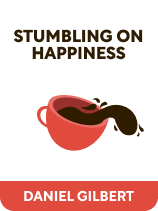

This article is an excerpt from the Shortform book guide to "Stumbling on Happiness" by Daniel Gilbert. Shortform has the world's best summaries and analyses of books you should be reading.
Like this article? Sign up for a free trial here .
Do you have a vision for the future? Do you make present-day decisions based on how you think you’ll feel later?
Social psychologist Daniel Gilbert explains in his book Stumbling on Happiness that, when you make life choices based on how you assume you’ll feel in the future, you tend to make poor choices. Your first mistake is assuming that you’ll feel the same in the future as you do now.
Here’s why people tend to make choices they regret in the future.
Planning for Your Future Self
According to Gilbert, you make choices about the future that are based on feelings you have now. Because how you’re feeling now may not reflect how you’d feel about the choice in the future, this can lead to poor decisions.
To explain this further, let’s first remember the fact that your mind creates your vision for the future using existing references (your current experiences and memories). Gilbert notes that when you’re considering a future choice, your mind pictures what that choice will look like using references from your past and present. You then have an emotional reaction to this picture in your mind, and this emotional reaction informs your decision—you’ll opt for the choice if you have a positive emotional reaction to the image of it.
Problems arise when your brain is already experiencing a strong emotional reaction to something in the present. In such cases, your brain focuses on your present feeling—ignoring the true future emotional reaction to the scenario you’ve imagined—and transposes it onto your imagined future scenario. You thus think your present feeling applies to the choice you’re considering for your future, even if your present emotion has nothing to do with the choice at hand. This can lead you to, say, reject a choice that would make you happy just because you’re feeling sad in the present.
For instance, imagine you’re considering moving to Miami. On the day you’re making the choice, you feel fairly neutral—you have no strong emotions in the present. When deciding whether or not to make the move, you conjure up an image of Miami as it appears in your memories: warm and sunny. This image makes you feel good—you love warm climates! Therefore, you conclude that you should move to Miami because doing so will likely make you feel good.
Now, imagine that you’re making this choice on a day when you’re incredibly angry due to a recent breakup. When you imagine Miami, your brain transposes your anger onto the mental image—you think that living in Miami would irritate you because it would be hot and uncomfortable all the time (even though really, you love the heat). You therefore decide against the move based not on how you’d actually feel about living in Miami, but based on how you’re feeling right now. This is a poor choice that sabotages an attempt at future happiness.
| Thinking Rationally, Not Emotionally Gilbert’s description of how we accidentally transpose current feelings onto imagined future scenarios suggests that we’re doomed to make bad choices based on misplaced emotions. However, there may be a way to circumvent this issue: by using logic-driven tools to assess your choices, rather than relying on your possibly flawed emotions to make decisions. One way to do this is by implementing a rigorous decision-making process in a spreadsheet: Step 1: State the goal of your decision—for instance, to move to a new city where you can live for the next 10 years. Step 2: Brainstorm options for achieving this goal. In this case, you’d write down cities you’re considering. Step 3: Define a set of criteria by which you’ll judge each option. At this point, rather than having an emotional reaction to your memories of both cities and making a decision based on that reaction, you’d instead decide what living criteria matter to you: cost of living, proximity to public transit, and so on. Step 4: Assign a degree of importance to each criterion. You might value the cost of living over proximity to public transit, as you’re on a budget. Step 5: Define questions about how well each option fits the criteria. You might define the question “What is the average cost of a condo in each city?” Step 6: Perform rounds of research to answer the questions and rank the different options based on your findings and the degree of importance of each criterion. (Don’t be afraid to re-rank the options based on new information as you continue your research.) |

———End of Preview———
Like what you just read? Read the rest of the world's best book summary and analysis of Daniel Gilbert's "Stumbling on Happiness" at Shortform .
Here's what you'll find in our full Stumbling on Happiness summary :
- A look at how your brain fabricates your reality leading you to make bad decisions
- The six specific types of bad choices people make
- How to improve your decision-making in the future






